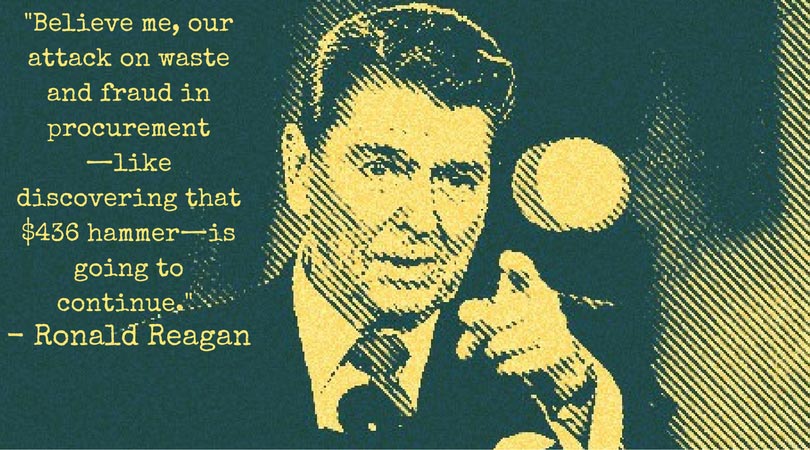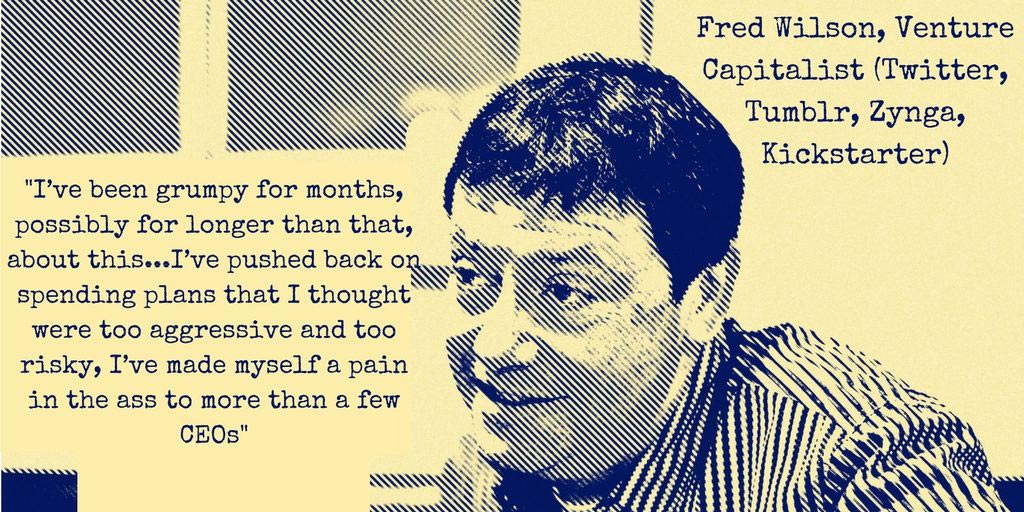What is Spend Culture and Why Does It Matter?
It All Began With a $436 Claw Hammer
The year is 1985 and Ronald Reagan — the 40th President of the United States and the architect of Reaganomics, the eponymous set of free market policies that laid the groundwork for the economic renaissance of the 1980s and the tech boom during the ensuing decades — has been alerted about a sensational scandal emerging from a procurement deal undertaken by the Department of Defense (DoD).
The point of contention is the alleged purchase of a $436 claw hammer, along with a list of equally overpriced purchases comprising the DoD’s indirect expenditure. The White House is bracing itself for a major field day with the press, as reporters and cameramen crawl over each other to grill the administration.
In his address to the nation, Reagan makes a reassurance to the American people: “Believe me, our attack on waste and fraud in procurement—like discovering that $436 hammer—is going to continue.” What followed was an onslaught of indignant op-eds, and newspaper columns over the scandal, forcing Reagan to institute a special commission to review the procurement process.
It took a $436 claw hammer, a $7,622 coffee maker, a $640 toilet seat and a $659 ashtray for an entire nation to catch on to the perils of unplanned and uncontrolled spending.
Fast Forward by 35 Years
We are in the year 2020; technology has become elemental to our existence, like air; billions are being invested in human intelligence, enterprise and imagination; indeed, at no other time in history, has it been so easy for an idea to cross the chasm between thought and reality.
And, yet, some problems prevail. In March this year, a company with a valuation of more than $16 Billion, reportedly cut its profit forecast by 78% after realizing that it had lost control of its spending. As a corrective, the CEO advised his employees to change the company spend culture. The CEO in question, whose company is one of the most valuable start-ups in the world, offered some sage advice to achieve a better spend culture — like reminding the staff to make sure to turn the lights off when not in use, or encouraging executives to show more restraint in ordering expensive meals.
For a multi-billion dollar company operating on the cutting-edge of technology, provisioned with all the resources and capital that an entrepreneur can only dream of, its solution to uncontrolled spending needs to be more than paternalistic cliches about the virtues of thriftiness. And yet, companies across the board are not immune to uncontrolled spending and don’t know how to deal with it — across industries, CFOs and CPOs are being let go after financial reports throw up surprises at the end of the quarter.
And as the curious case of the $436 claw hammer showed, such alarming patterns of overspending are generally reported in the company’s Indirect Spend — or in other words, the expenditure on goods that do not add to the businesses’ bottom line, such as repairing equipment, buying office supplies, and other kinds of services. And because Indirect Spend is considered only a secondary component of a company’s spend, its effects on a company’s finances tend to fly under the radar of most companies, even though it accounts for close to 80% of a company’s purchases.
Process-driven & Proactive
In truth, the fault lies not in uncontrolled spending — it lies in the failure to recognize that companies do not have a process to take control of their spending. And this process is not the same as laying off employees or making half-baked and ad-hoc attempts at penny pinching. No, this process is really what is Spend Culture. And Spend Culture is not knee-jerk and reactive; it is process-driven and proactive.
In Purchasing and Procurement circles, terms such as Maverick Spending, Cash Leakage etc. abound; but these are coinages that describe the disease, not the set of conditions and behaviors enabling the disease. Spend Culture, on the other hand, is an overarching concept that encompasses every aspect of how a company spends its money, capital, resources and energies — indeed, the state of your Spend Culture can make or break your company.
Spend Culture is a nascent concept — it does not have a vocabulary yet. But, it has always existed. And now, for the first time, it has been articulated.
Editor’s note: This post was originally posted in 2016 and has been updated for improved accuracy and comprehensiveness.



